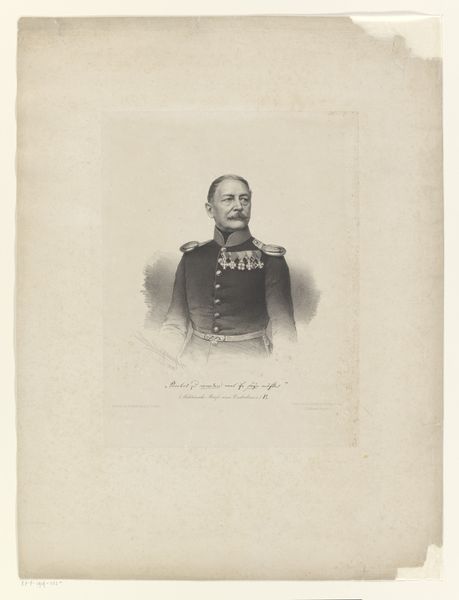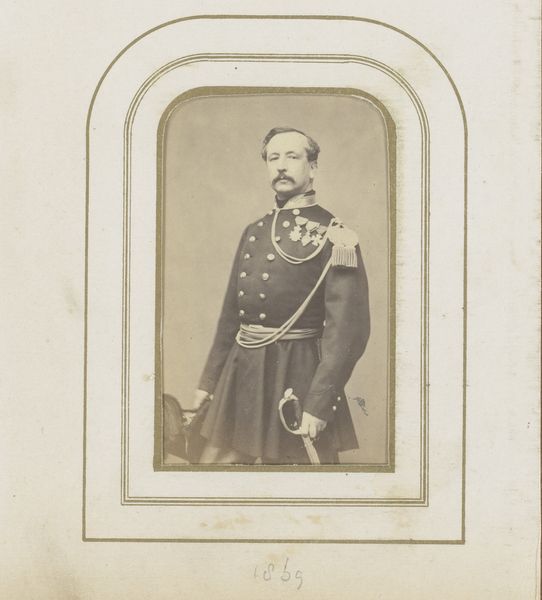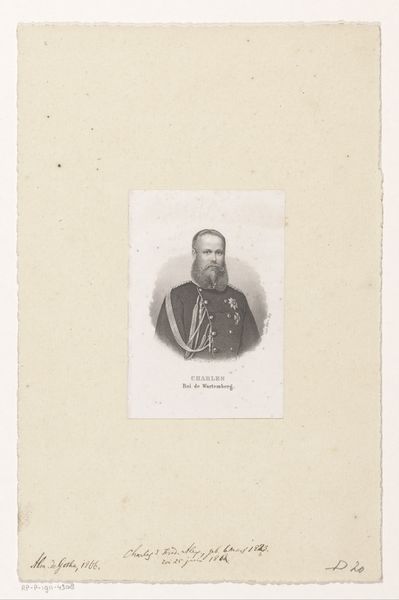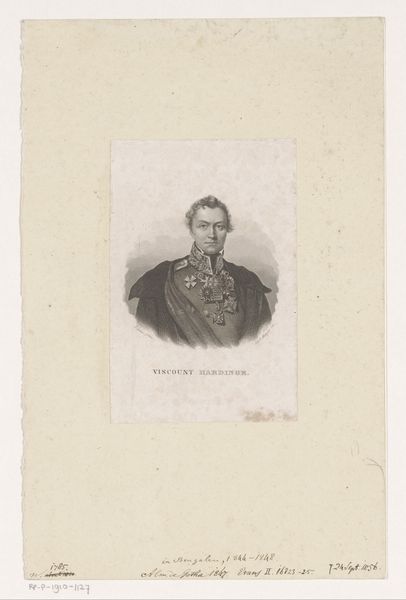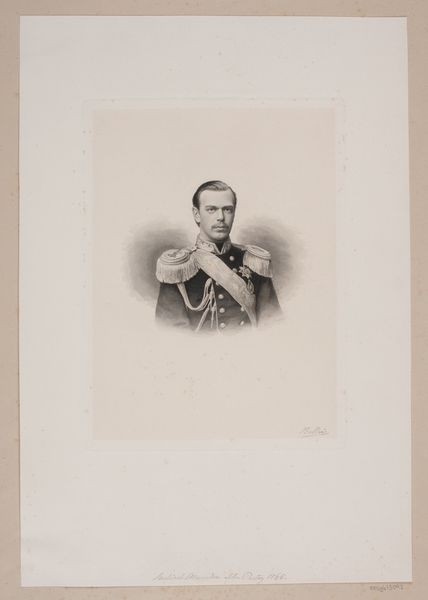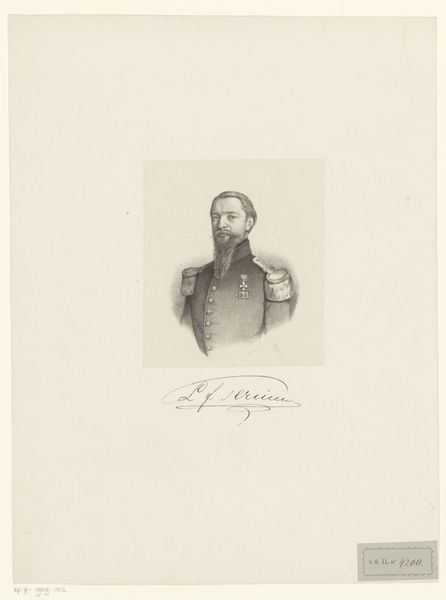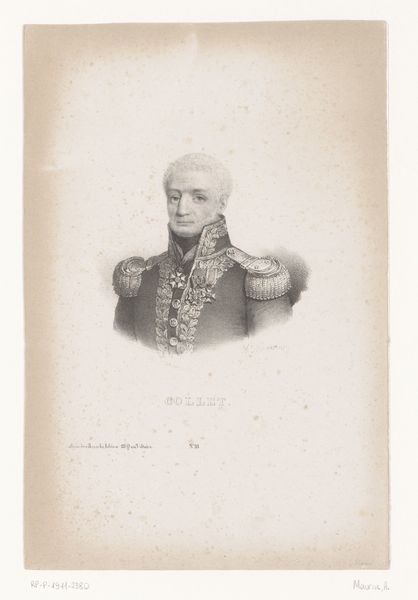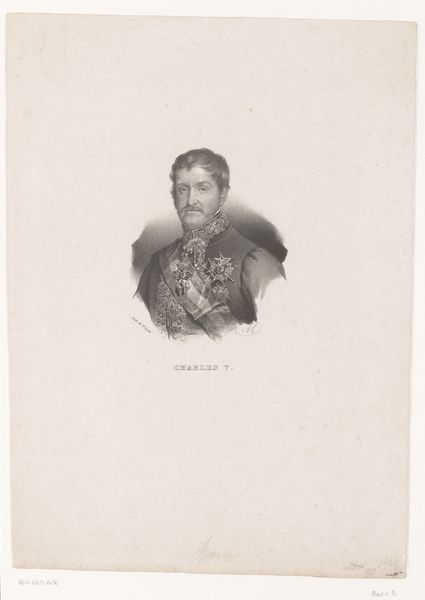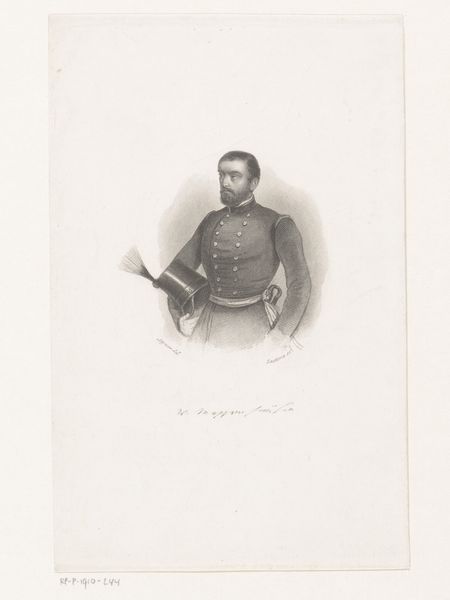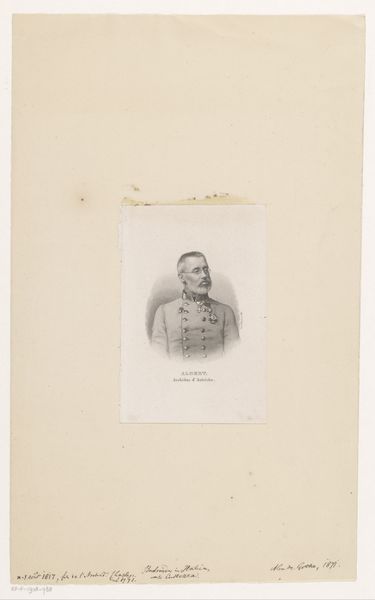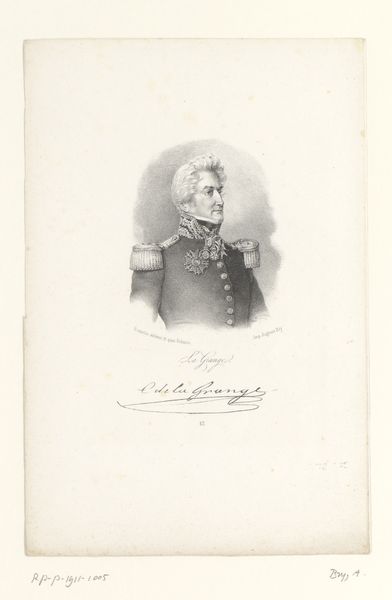
Dimensions: height 109 mm, width 74 mm
Copyright: Rijks Museum: Open Domain
Curator: This engraving from 1851 by Carl Mayer is a portrait of Wilhelm, who later became Wilhelm I, Emperor of Germany, depicted here as the Prince of Prussia. It’s currently held at the Rijksmuseum. Editor: It certainly captures a sense of authority. Even as a prince, his gaze is unwavering, his posture rigid. I wonder how much of that is inherent and how much is constructed for the portrait. Curator: It’s fascinating how the printmaking process contributes to that impression. Consider the precision of the engraving, the labor involved in meticulously carving those lines. The act itself is a symbol of power, permanently imprinting this image for mass consumption. The lines themselves emphasize bone structure, the set of his jaw, highlighting not only Wilhelm's status but a vision of masculine strength. Editor: Exactly! And look at the details of his uniform – the medals, the ornate braiding. It’s a deliberate presentation of imperial might, especially considering this was just a few years after the 1848 revolutions. The print would have circulated widely to consolidate and project power, reaffirming existing hierarchies in a time of social upheaval. The artist actively constructs an image meant to solidify an existing societal structure. Curator: Absolutely. Engravings like these were not merely neutral reproductions, but crucial tools for shaping public opinion and asserting dynastic legitimacy. The act of dissemination, how this image then interacts with materials like paper, ink, even where it ends up being placed – whether on a wall, in a newspaper – becomes an extension of its material history. Editor: And by distributing these prints widely, the monarchy made Wilhelm a recognizable and imposing figure, crucial for his later role as emperor. How interesting that something reproduced through very common, even 'cheap', material helps prop up something as unapproachable as Imperial authority. We have to look critically at the ease with which symbols are internalized and influence our perspective. Curator: Indeed, the choice of printmaking, while seemingly simple, becomes a significant factor in understanding how power operates and disseminates through material forms. It's not just about *who* is portrayed, but *how* and *why*. Editor: Thinking about the historical context, this portrait reminds us that art is never truly separate from the political and social realities in which it is created and circulated. The medium *is* the message, materially and figuratively. Curator: Precisely. By paying attention to those factors, we see how even seemingly straightforward portraits played a role in shaping the narratives of the time. Editor: And understanding these connections enriches our perspective and allows us to examine power and representation today.
Comments
No comments
Be the first to comment and join the conversation on the ultimate creative platform.
